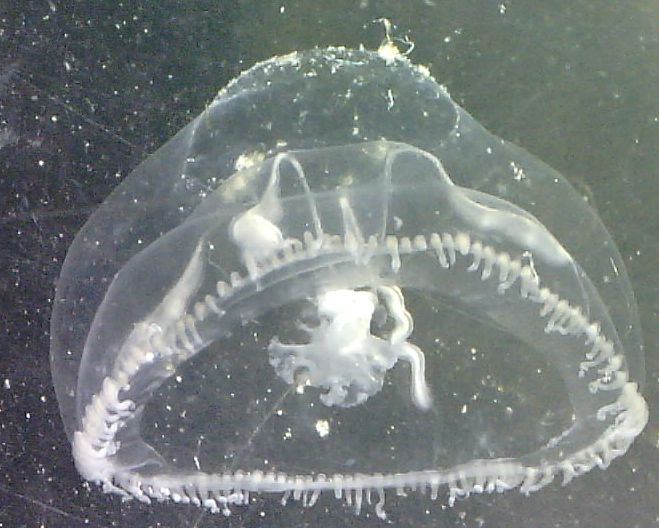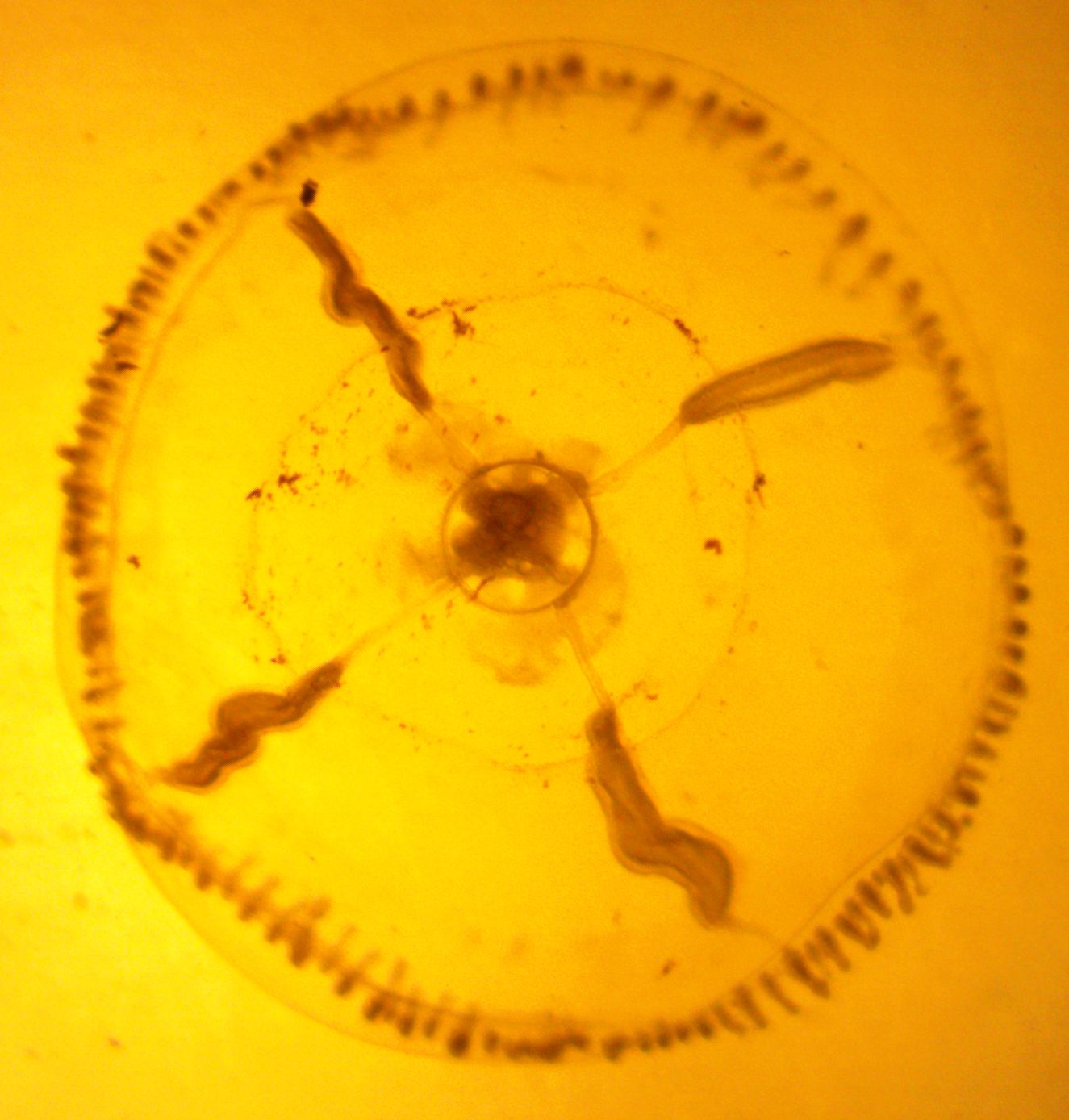Eutonina indicans (Romanes, 1876)Common name(s): Aggregating jelly |
|
| Synonyms: |  |
|
Phylum Cnidaria
Class Hydrozoa
Suborder Thecata
(Leptomedusae)
Family Eirenidae
|
|
| Eutonina indicans, 8 mm diameter, captured on a midwater plankton tow in the Strait of Juan de Fuca | |
| (Photo by: Dave Cowles, July 2014) | |
Description: The up to 200 highly extensile tentacles of this hydromedusa originate at the margin of the bell. They are unbranched, do not have ocelli at their base nor prominent rings of cnidocysts along their length, and are all about the same size and evenly distributed all around the bell margin. The four radial canals are unbranched, have no lateral diverticula, and proceed all the way to the ring canal at the margin of the bell. The diameter of the bell is greater than the height. The gonads are elongated, sinuous, and located along the radial canals. The stomach and manubrium are suspended below the subumbrella on a gelatinous peduncle and may hang down to the bell margin like the clapper of a bell. The manubrium has 4 frilly lips. The animal is transparent and colorless except for some white, bluish-white, or sepia color on the stomach, gonads, and bases of the tentacles. The tentacle bases may also have some black pigment. Diameter to 4 cm, but often about 1 cm.
How to Distinguish from Similar Species:Polyorchis penicillatus has red ocelli and distinctive, fingerlike gonads which hang down from the subumbrella. Phialidium gregarium has a stomach attached directly to the subumbrella rather than suspended on a peduncle. Eirene mollis has brick red tentacle bulbs. Foersteria purpurea has purple on its stomach and radial canals. Neoturris brevicornis is taller than wide and the stomach is not suspended on a peduncle. Mitrocoma cellularia's stomach is not suspended on a peduncle.
Geographical Range: North Pacific from Japan through Alaska to Santa Barbara, California, the Bering Sea, and the North Atlantic.
Depth Range: Epipelagic
Habitat: Pelagic. The colonial hydroid polyp life stage is found on eelgrass, crabs, and rocks in shallow water.
Biology/Natural History: This jellyfish can be found in abundant groups in surface water in spring and summer, especially on the outer coast. It feeds on eggs of invertebrates, on appendicularians, and on other small hydromedusae.
The colonial hydroid polyp life state is thecate
(has hydrothecae),
with the thecae
deep enough to contain the contracted hydranth
(polyp) and covered with an operculum.
The operculum
is
simply an extension of the walls of the hydrotheca,
without a crease at the base. Even the gonophores
are protected by a gonotheca, but they release free medusae
(as seen here). The hydrothecae
are radially symmetrical, without cusps on the margin. The
stalks
of the hydrothecae
are irregular and covered with rings but not a spiraling
pattern.
The colony usually is small and has 200 or less polyps.
| Return to: | |||
| Main Page | Alphabetic Index | Systematic Index | Glossary |
References:
Dichotomous Keys:Carlton, 2007
Kozloff, 1987, 1996
General References:
Kozloff,
1993
Lamb
and Hanby, 2005
Wrobel
and Mills, 1998
Scientific Articles:
Web sites:
General Notes and Observations: Locations, abundances, unusual behaviors:

This photo taken in transmitted light highlights many of the features
of the hydromedusa.
Authors and Editors of
Page:
Dave Cowles (2014): Created original page
CSS coding for page developed by Jonathan Cowles (2007)
Salish Sea Invertebrates web site provided courtesy of Walla
Walla University